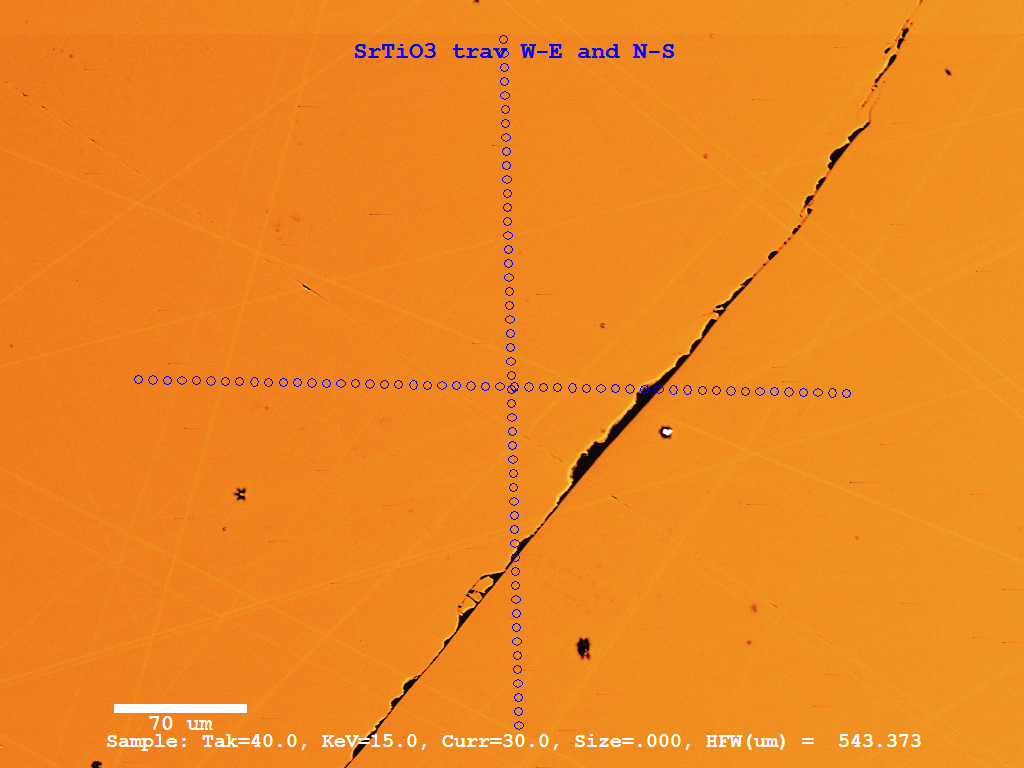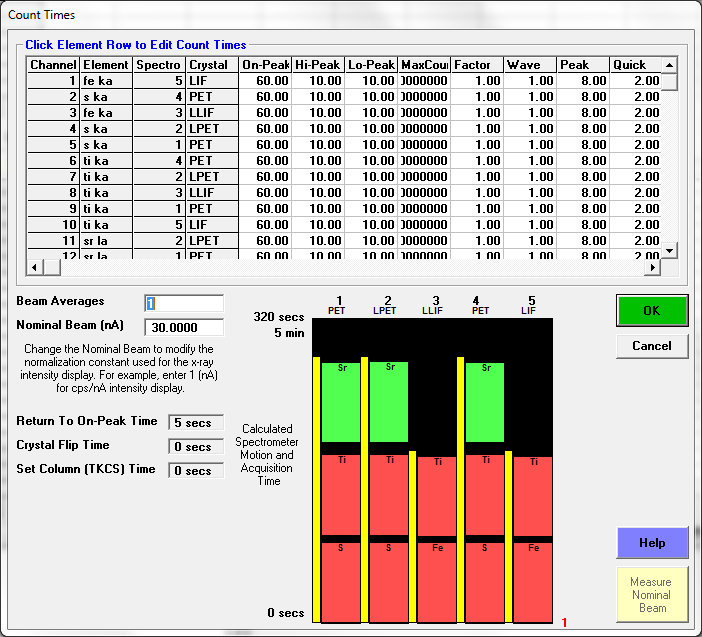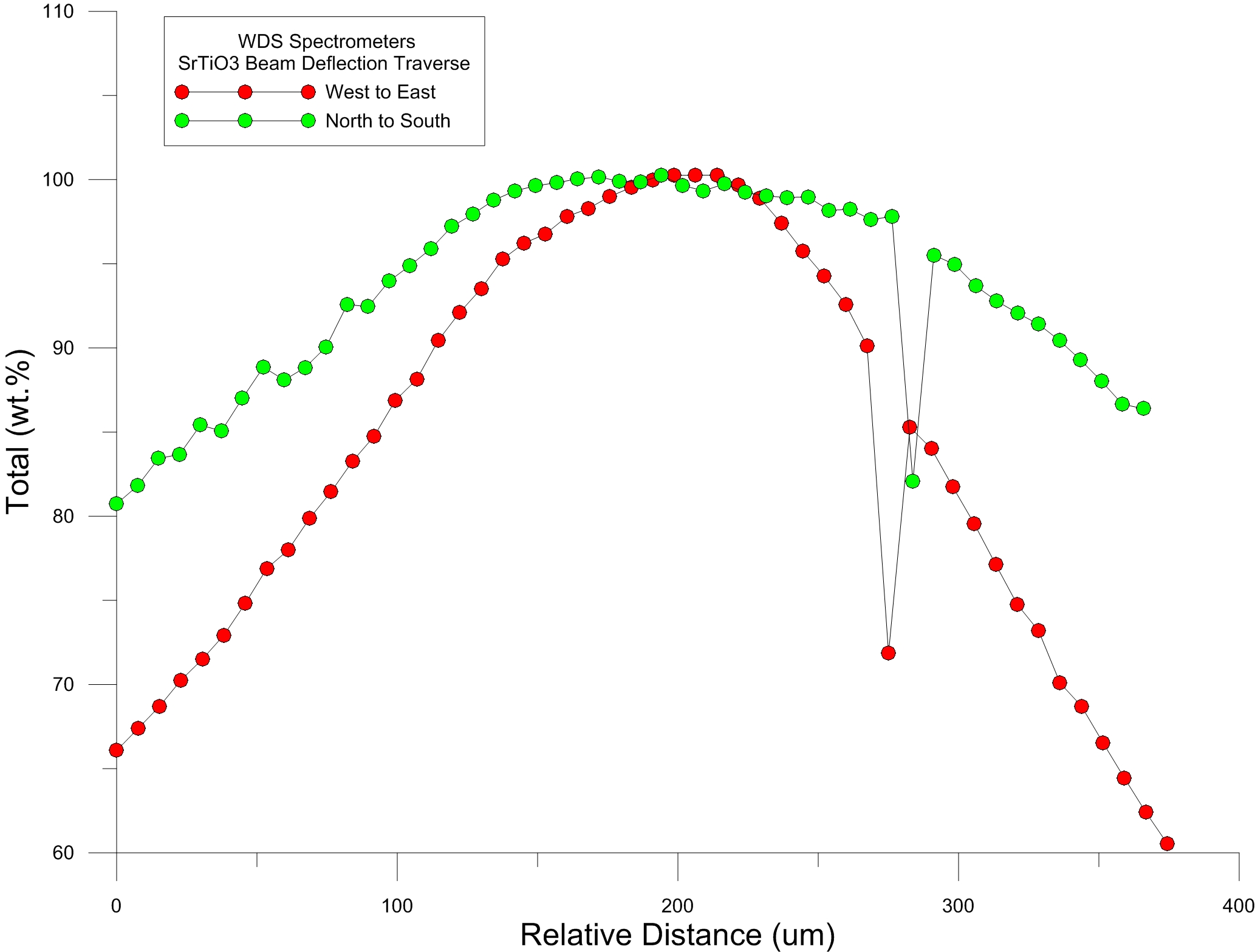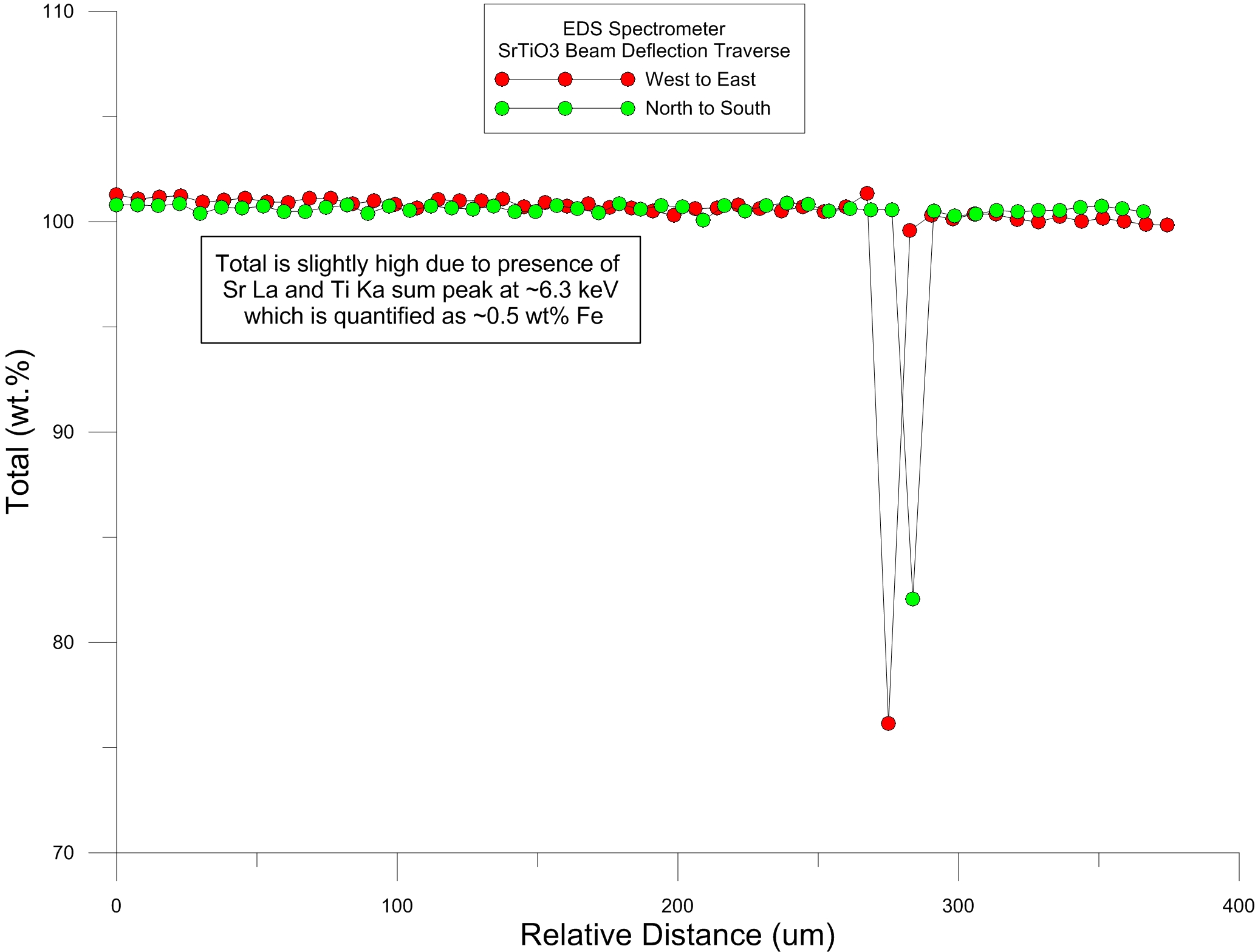So I decided to perform a test on my Cameca Sx100 by tuning up a number of elements and acquiring a beam deflection analysis on some standards. In this image we see the SrTiO3 standard and two traverses digitized (roughly) west to east and north to south. The data was acquired by moving the stage to the center of the digitized image and utilizing beam deflection to move the beam to each traverse position.

Both WDS and EDS spectra were acquired at the same time and processed separately. The WDS setup looks like this:

Here are the WDS results just looking at spectrometers 1, 2 and 4 for Sr La (PET, LPET and PET) and all 5 spectrometers for Ti Ka (PET, LPET, LLIF, PET and LIF). Oxygen was calculated by stoichiometry and the acquired elements were "aggregated" using the Probe for EPMA aggregate intensity feature:

Next the same acquisition but processed for Ti, Sr, S and Fe as EDS elements:

So, with a Thermo NSS EDS system (10 sq. mm) in the front port, we see essentially *no* "collimation defocusing" on the EDS out to ~+/- 200 um, but (of course) we see severe Bragg defocusing with the WDS spectrometers even a few 10 tens of microns from the Bragg x-ray focus.
I expect that every EDS system will differ more or less depending on the mechanical details. So we now have two data points, the UTAS SEM and the UofO Sx100.
Any JEOL people with a Thermo detector interested in trying this test?
john